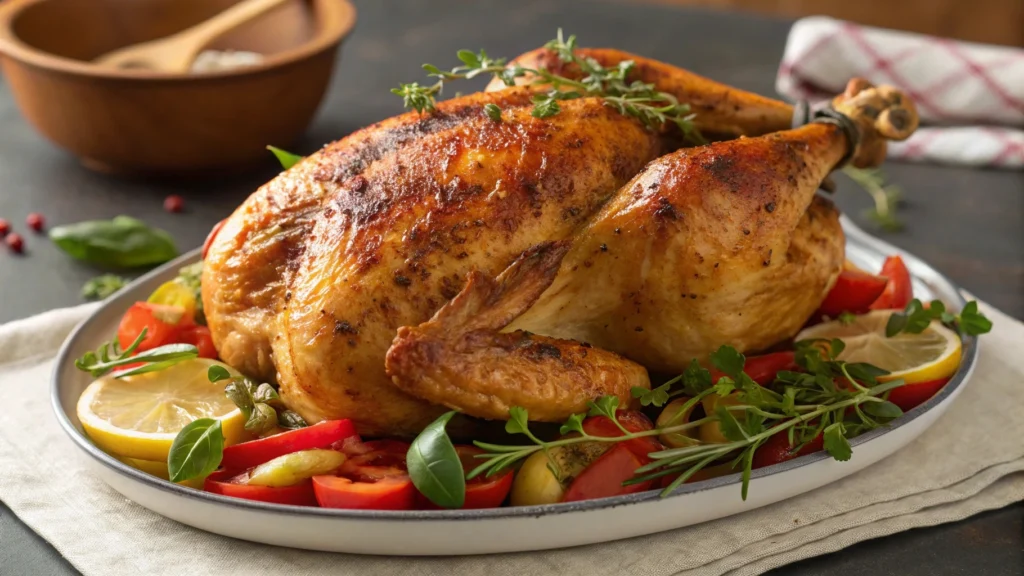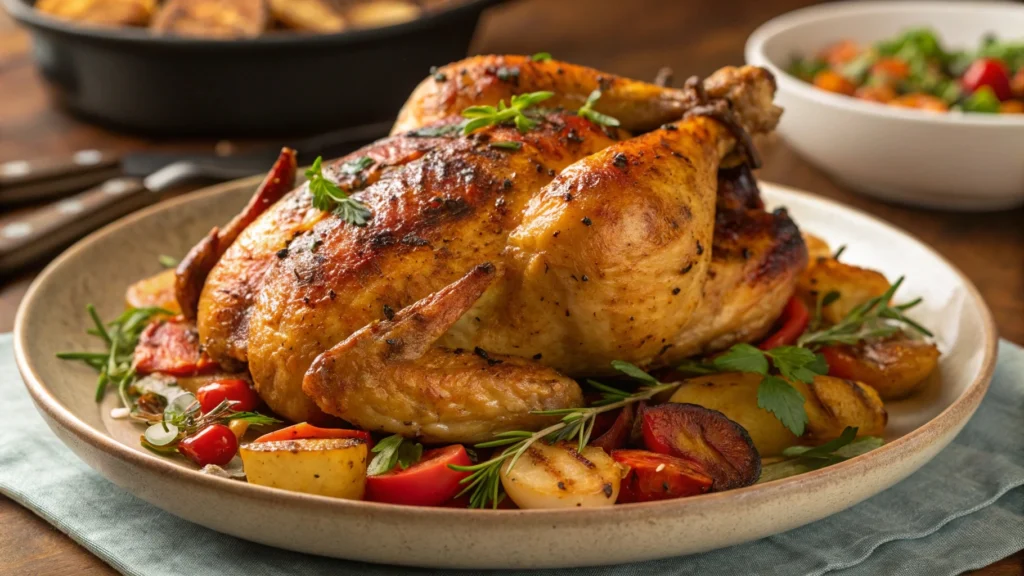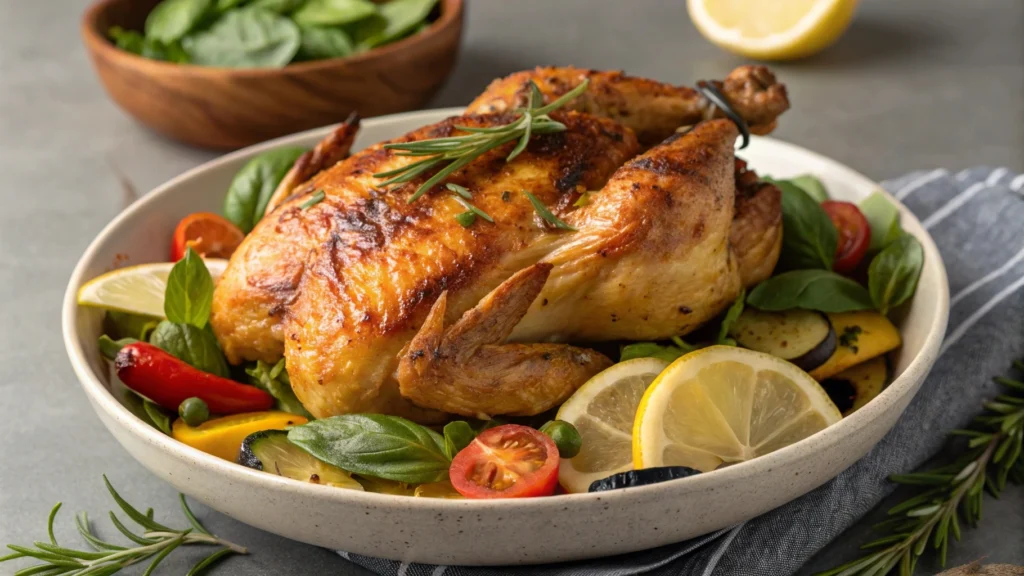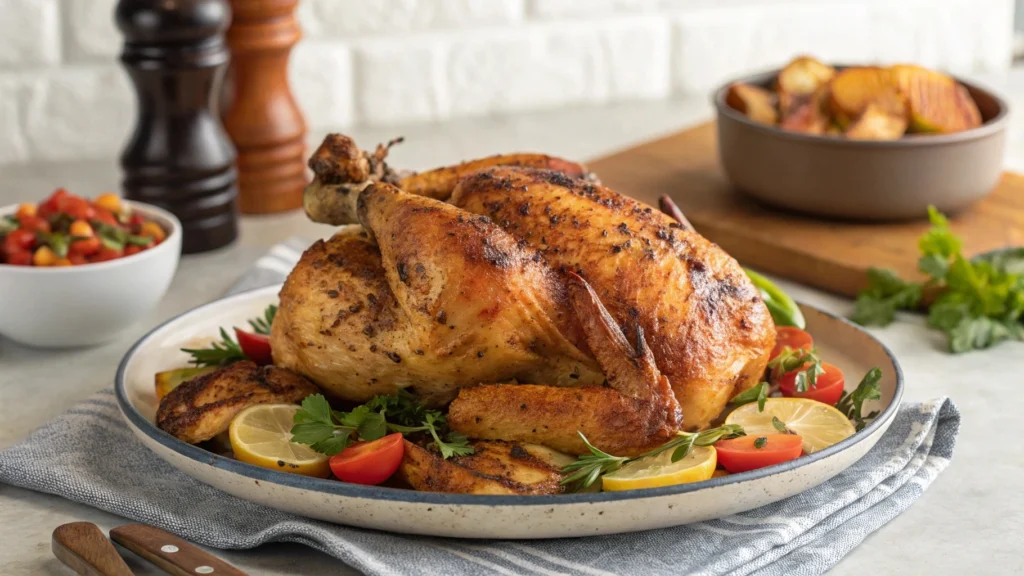Introduction

This guide will show you how to cook chicken to perfection using the method that suits your taste, tools, and time. Whether you love the smoky char of grilled chicken, the crispy skin of a perfectly roasted bird, or the golden crunch of classic fried chicken, this article has you covered.
Choosing the Right Cut of Chicken
Chicken Breasts vs Thighs vs Whole Chicken
- Chicken breasts: lean, quick-cooking, best for grilling and pan-frying
- Chicken thighs: juicier, more flavorful, ideal for roasting and frying
- Whole chicken: cost-effective, great for roasting or spatchcocking
Boneless vs Bone-In
- Boneless: faster cook time, easier to serve
- Bone-in: retains more moisture and flavor, ideal for roasting
Skin-On vs Skinless
- Skin-on: adds flavor and crispiness, great for roasting and frying
- Skinless: healthier, preferred for grilling

How to Grill Chicken to Perfection
Preparing the Grill: Gas vs Charcoal
- Gas grills offer convenience and control
- Charcoal grills provide smoky flavor
- Clean grates and preheat thoroughly
Marinades and Seasoning Rubs
- Marinate 1–4 hours in citrus-based or yogurt marinades
- Use dry rubs with spices like paprika, garlic powder, cumin
Sample Marinade Table
| Ingredient | Quantity |
|---|---|
| Olive oil | ¼ cup |
| Lemon juice | 2 tbsp |
| Garlic (minced) | 3 cloves |
| Paprika | 1 tsp |
| Dried oregano | 1 tsp |
| Salt and pepper | To taste |
Grilling Time & Internal Temperature
- Chicken breasts: 6–8 minutes per side
- Thighs (bone-in): 10–12 minutes per side
- Internal temp: 165°F / 74°C
Pro Tips for Juicy Grilled Chicken
- Let meat rest before cutting
- Avoid high flames to prevent burning
- Use indirect heat for bone-in cuts

How to Roast Chicken for Juicy, Flavorful Results
Preparing Your Oven and Cookware
- Preheat to 400°F (204°C)
- Use roasting pans or cast-iron skillets for even heat
Seasoning and Trussing Techniques
- Use salt, pepper, butter, herbs (rosemary, thyme)
- Truss whole chicken to cook evenly and hold shape
Roasting Time Table
| Chicken Part | Temp | Time |
|---|---|---|
| Whole chicken | 375–400°F | 1h–1h 20m (5 lbs) |
| Thighs (bone-in) | 400°F | 35–45 minutes |
| Breasts | 375°F | 25–30 minutes |
Tips for Crispy Skin
- Pat chicken dry before seasoning
- Don’t cover while roasting
- Use convection setting if available
How to Fry Chicken for Maximum Crispiness
Choosing the Right Oil
- Use oils with high smoke points: peanut, canola, sunflower
- Maintain oil temp: 350–375°F (175–190°C)
Brining & Seasoning Options
- Buttermilk brine (6–12 hours) for moisture and tang
- Dry rub: salt, cayenne, onion powder, flour coating
Frying Techniques
- Deep-frying: full submersion, uniform crispiness
- Pan-frying: less oil, more control
- Use tongs and avoid overcrowding
Buttermilk Brine Table
| Ingredient | Quantity |
|---|---|
| Buttermilk | 2 cups |
| Salt | 1 tbsp |
| Hot sauce | 2 tsp |
| Garlic powder | 1 tsp |
| Black pepper | 1 tsp |
Safety Tip
- Always let oil cool before discarding
- Use a thermometer to avoid undercooked centers
Chicken Cooking Tips and Food Safety Essentials
Internal Temperature Matters
- USDA safe temp: 165°F (74°C) for all chicken
- Use a meat thermometer inserted in the thickest part
Resting Chicken After Cooking
- Rest 5–10 minutes before cutting
- Allows juices to redistribute for more moisture
Kitchen Safety Tips
- Use separate cutting boards for raw chicken
- Wash hands and utensils with hot, soapy water
Storage and Reheating
- Refrigerate leftovers within 2 hours
- Reheat to 165°F
- Store up to 3 days in airtight container

Conclusion
Cooking chicken perfectly—whether grilled, roasted, or fried—is part technique, part timing, and part love. You’ve learned how to choose the right cuts, prepare flavorful marinades, use the correct tools, and apply proper cooking temps. Now it’s time to put your knowledge into action. Try new spice blends. Experiment with grilling or pan-frying. You’ll not only build confidence but also turn every meal into something worth savoring.
FAQ: Chicken (Grilled, Roasted, or Fried)
Q1: What is the best way to cook chicken for flavor?
A: Grilling adds smoky flavor, roasting brings deep savory notes, and frying gives you crispy texture. It depends on your taste preference.
Q2: How do I keep chicken from drying out when grilling?
A: Marinate beforehand, grill over medium heat, and use a meat thermometer to avoid overcooking.
Q3: Is roasted chicken healthier than fried chicken?
A: Yes. Roasting uses less oil, retaining nutrients while reducing calories and fat.
Q4: What is the safe internal temperature for cooked chicken?
A: Chicken should be cooked to 165°F (74°C) internally for safety.
Q5: How long can I keep cooked chicken in the fridge?
A: Store cooked chicken for up to 3–4 days in an airtight container in the refrigerator.
